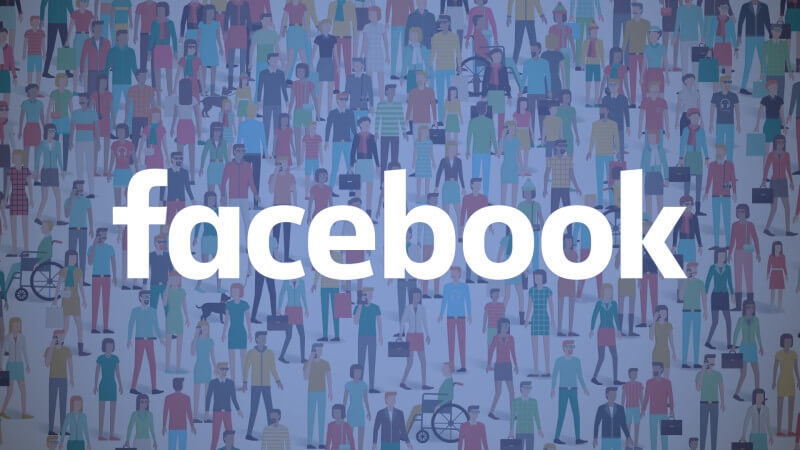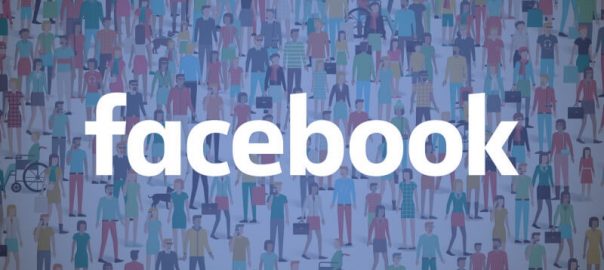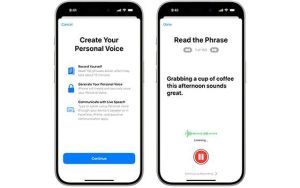Lest you forget why we’re all on Facebook in the first place, contributor Mark Traphagen offers inspiring examples of brands harnessing the organic power of the social network.

In my column last month, I set out a manifesto for social media marketing in 2018, a call to “grow up or get out.” I compared what social media is going through now — privacy scandals, shrinking reach, loss of metrics and more — to the changes search engine optimization (SEO) had to deal with a few years ago as Google cracked down on the tricks and hacks too many SEOs relied on.
Over the next few columns, starting with this one, I want to provide examples that illustrate what social media marketers must do to survive and thrive in the years to come.
Let’s start with business pages that still get amazing organic reach on Facebook (something you allegedly can’t do anymore). In January of this year, Facebook announced that in order to earn a prominent spot in users’ newsfeeds, content (including brand and publisher content) had to have the potential of creating “meaningful interaction” (i.e., real conversations) among regular users.
Below you will find examples of content from four brands that succeed exceptionally at achieving that goal.
In evaluating the content to feature in this post, I used the following criteria:
- The page is the official page of a recognized, legitimate business that sells its own products or services.
- The post was not a contest.
- The post elicited real human expressions, thoughts and opinions in the comments, with many comments becoming lively threads of real conversation and dialog.
- The post is typical of the content the brand posts on their Facebook page, not just a one-off viral post.
- The content was relevant to the brand, even if not directly selling its products or services.
(Note: I don’t have a business relationship with any of the brands I’ll profile here.)
REI — The Mirnavator
REI (Recreational Equipment Incorporated) is a member-owned co-op with 154 retail stores in the United States selling gear and clothing to outdoor enthusiasts. They have been extremely successful at marketing themselves as a lifestyle brand, with content that tells their enthusiastic members and customers “we share your passions.”
There is no better example of that than their most-engaged Facebook post of last year:
The video embedded in the post has been viewed over 6 million times, and the post itself has over 45,000 reactions, 54,000 shares and 8,300 comments.
The video tells the true story of Mirna Valerio, an avid ultra-runner who happens to be a plus-sized woman. From its first moments, the video grabs its viewers by the heartstrings as we see Mirna running a long-distance endurance race while a narrator reads an actual email she received calling her a “fat fraud” who has no business in the world of competitive running.
It goes on to tell Mirna’s story and shows her competing in extreme endurance trail races. We hear her describing how she deals with negative and disparaging comments. “I do it,” says Mirna, “because I do want to show people that it’s possible.”
The most dramatic moment of the video, however, happens when Mirna relates taking out her cellphone in the middle of a 50K trail race to take a selfie, but then coming upon the hateful email we heard in the beginning of the piece. The correspondent tells her she is “a liar and a fraud” who “can move no faster than I can walk,” concluding, “you are not a runner.”
Mirna explains how fat-shaming is a real thing, as exemplified by the email, but says she keeps going because she knows the truth: She IS a runner.
A great many of the comments on the post are from people relating similar experiences, many of them saying that Mirna herself inspired them to get out and run despite the fact that they don’t “look like a runner.” Additionally, customers used the opportunity to call on REI to have more diverse sizing in its stores (they already carried plus sizes online), leading to the company committing to do just that in 2018.
Why is this post successful?
The most obvious reason this post has received so much engagement (continuing to the time of this writing, even though the post was published last September) is its emotional appeal. Appeal to the emotions is one of the most common denominators in social posts that get high numbers of shares and comments. In this case, the emotional connection centers around a likable, appealing individual overcoming obstacles both internal and external to pursue her passion.
The video also employs excellent storytelling, another frequently occurring factor in successful social media posts. It starts with the dramatic tension of hearing a highly critical email while we’re seeing the person being criticized doing what her critic claims she has no business doing. Then we move to her personal story and see her competing in races.
But the climax comes when the video recreates the moment she first saw that email while on the trail in a grueling race. We hear her raw emotions, but also her determination to ignore anything outside of her own drive and enthusiasm.
The brand is also very active in the comments, responding to a great many. As noted earlier, as a result of a number of comments, the company even pledged to make a change in their store inventories, indicating that it takes their audience seriously and is open to new ideas. This, of course, only encourages more engagement by fans.
How does this post achieve business goals?
Much of REI’s success has been built on their understanding and identification with the passions of their customers. People who buy backpacks, running shoes, bicycles and other active outdoor gear typically don’t see themselves as simple hobbyists. Their outdoor recreation tends to be among the core pursuits of their lives, deeply affecting everything else they do. This video, and much of REI’s other social content, relates directly to that lifestyle.
The video shows that REI “gets” how important their customers’ outdoor pursuits are to their lives (no matter what they look like). It helps create a feeling of “we’re into this, too.” And, of course, in the course of the video, we’re seeing many things that REI sells (clothing, running shoes, hiking boots, tents, water bottles).
Even though these products are never explicitly mentioned, the association is there. The message: REI provides the things that help extraordinary people do great things.
Seventh Generation — California Comes Clean
Seventh Generation sells cleaning, paper and personal care products with an emphasis on sustainability, health and environmental awareness. They contribute 10 percent of their profits to “non-profit community, environmental, health and responsible business organizations working for positive change.”
Their post about celebrating the passage of California’s “Cleaning Products Right to Know Act” has 69,000 reactions and 1,400 comments and has been shared over 9,000 times.
The post breaks news that’s important to people who would be target customers of Seventh Generation. The legislation requires companies selling cleaning products in California to fully disclose all ingredients. All Seventh Generation products are supposed to contain only “natural” ingredients proven to cause no harm to humans or the environment, so the legislation obviously is a plus for them, as consumers aware of those issues will now be able to compare other brands’ ingredient lists with those on SG products.
Not surprisingly, the comments are largely very enthusiastic and supportive. As with REI, Seventh Generation’s values strongly overlap with their target audience’s, and putting those values right out front gets them strong support and affinity.
Many of the commenters express a wish for this Act to become national legislation, and Seventh Generation has a response. They provide a link to their campaign, already in progress, to secure similar legislation at the national level.
Why is this post successful?
According to a joint study by Moz and Buzzsumo, one of the post types likely to generate both significant social shares and a high number of links is “opinion-forming journalism.” This post perfectly exemplifies how a brand creates that kind of content. It takes a strong stand on an issue important to the brand’s target audience and shows how the brand was actively involved in the issue.
However, the post is not merely self-congratulatory. It concludes by acknowledging “all who helped make this possible” (which presumably includes many of their fans) and noting that the victory couldn’t have happened without them. In other words, they celebrate their community and promote a “we’re in this together” spirit.
How does this post achieve business goals?
As with REI, Seventh Generation has capitalized on the power of a passion- or cause-based brand. Whereas with REI, the connection is at the level of a personal pursuit, for Seventh Generation it’s about personal well-being and environmental protection.
The founders of the brand are sincerely passionate about these things, and they demonstrate that genuineness to their audience by actively supporting relevant causes and legislation.
JetBlue — Celebrity Non-event Event
JetBlue is the sixth-largest US airline, headquartered in New York City. The company has increased profit every year for the past nine years and is consistently named as one of the best airlines by numerous publications and consumer polls.
JetBlue’s initial success came through inventing a unique niche: low fares, yet with certain amenities (e.g., extra leg room, free in-flight TV) never before offered in their market segment. They also worked hard, both in their marketing and through their actual customer experiences, to build an image as consumer-friendly and fun.
Social media has been an important component of JetBlue’s successful marketing. The company is known for quick responses to customer inquiries on social networks, especially Twitter. JetBlue social media agents will even engage in light chit-chat with people mentioning them or using one of their branded hashtags. Such interactions have undoubtedly contributed to successes like JetBlue’s being named as the top airline for customer loyalty in 2016 by BrandKeys.
On the day of the August 2017 solar eclipse, JetBlue’s marketing and social media teams created a Facebook Live video event featuring actor Skylar Astin, famous for his roles in the film “Pitch Perfect” and its sequel. The video post earned 49,000 views, 863 reactions, 439 comments and 80 shares. It should be noted here that the share metric does not include the many hundreds of viewers who “shared” the video by tagging their friends in the comments.
While not as dramatic in its metrics as the two previous examples, this is still significant engagement for a brand on Facebook and a great example of the usefulness of Facebook Live for brands.
The live video opens with the view from the roof of JetBlue’s corporate headquarters in New York City, looking in the general direction of the sun. Drawn in by the tease of Skylar Astin’s name in the post, and perhaps also out of curiosity over the strange billing of a “No Blackout Non-Eclipse Non-Event,” viewers quickly tuned in by the hundreds, and then thousands, as early viewers tagged their friends to come watch the non-event. Just to sweeten the pot, JetBlue also advertised they would be giving away 100,000 TrueBlue points to someone who had clicked “Going” on the calendar entry for the live event.
And then nothing happened for over 10 minutes. Just the same static view of the sky from a rooftop. What would appear to be a social media faux pas–over 10 minutes of “dead air”–was really just part of JetBlue’s genius and their characteristic quirky sense of humor. With all of the hype building up to this solar eclipse, the JetBlue team knew there were many speculating that it would be a “non-event,” i.e., that it would prove to be not as spectacular as the hype promised. So JetBlue intentionally created what appeared to be their own “non-event,” teasing the appearance of a celebrity, but then seemingly having him not show up.
The gamble paid off, as many thousands continued to tune in to the videocast, and commenters speculated wildly on what was going on. Would Skylar show up? Had JetBlue blown it? Were they pulling our collective legs?
Finally, after more than 10 minutes, Skylar Astin popped into view, but only to further tease the audience, asking them to invite more of their friends to the video, because he would be sharing an important announcement soon. And then just the sky again. A few minutes later, Skylar reappears, carrying in a large cooler… and then disappears again. By this time, the audience chatter is at a fever pitch. What in the world is going on here? Viewers accelerate their invitations to friends, telling them they’ve got to come see this.
When Skylar comes back, he explains to the audience (with obvious sarcastic humor) that he doesn’t believe there actually will be a solar eclipse. The reason? He found out that JetBlue doesn’t believe in blackout days for using their TrueBlue loyalty points, so he doesn’t believe this day will be a “blackout” either. (In the airline industry, blackouts are flights for which customers cannot use their loyalty points. One of JetBlue’s points of distinction is that they have no blackout restrictions.)
I won’t spoil the rest of the fun Skylar Astin and JetBlue had with their audience, but you can watch the continuation of the live video for more.
Why is this post successful?
JetBlue’s “No Blackout Non-Eclipse Non-Event” has just about every element you could want in a brand live video event.
- They make use of a celebrity influencer obviously popular with the audience they attracted. But they don’t just use him for his name value or his pretty face. Instead, they make him part of the prank and the inside joke shared by the audience.
- The event overlaps with something the brand’s audience is already excited about: a major solar eclipse. This is newsjacking in real time to the extreme.
- The event itself is perfectly in keeping with the brand’s playful and engaging character. It feels right to a JetBlue audience.
- The video kept viewers engaged for a long time by doing the unexpected, and building curiosity and suspense.
In short, this is exactly the kind of live video that almost guarantees users will comment, engage and keep viewing.
How does this post achieve business goals?
The design and execution of this event show that JetBlue’s social media team really understands their company’s personality and image, as well as why their customers like the brand so much and remain so loyal.
The tie-in with the brand is in the clever connection of JetBlue’s no-blackout policy with the most famous “blackout” in years, a solar eclipse across the heart of the US. They take it further by playing on the rampant cynicism pre-eclipse that the astronomical show would end up a non-event. So working with their influencer, they create a live “non-event” event. The brand connection? Blackout flights are a non-event for JetBlue.
All of this serves to reinforce the JetBlue marketing message and key distinctives at several levels, including:
- JetBlue as a quirky, fun brand.
- JetBlue’s TrueBlue rewards program, with the associated contest to give away TrueBlue points to a viewer.
- Reinforcement of JetBlue’s unusual no-blackouts policy to its customers.
Improving YOUR Facebook reach
I’ll conclude by summing up the lessons we’ve learned from these three brands and how you can apply them to the posts and content you create for your own Facebook business pages.
- Appeal to emotions. I don’t care what you sell or who your target is, marketing is a human endeavor, and humans are always most moved to action by emotions. Seek to build in an emotional trigger in your posts, but keep it real. All three of the examples above succeed because they talk about things that genuinely move their audiences, things they care about. They become highly shareable because people want their friends to see they care about those issues, and the brand’s post helps them tell that story. But avoid just creating emotion for emotion’s sake.
- Tell a story. Stories are another element that has a natural appeal to humans. We can more easily follow any concept that is told in the form of a story, and we’re also more likely to remember it later. Stories also help enhance the emotional element mentioned above. Wherever possible, think from a point of conflict with which your audience can identify (such as Mirna receiving the hateful email), and then walk them through to a resolution.
- Be active in the comments. Commit to regularly checking your notifications, and reply to as many comments as you can, even if it’s just to thank the user for their comment. Wherever possible, interact in a thoughtful way with comments, showing that you’re listening and engaged.
- Take a stand. When possible, post an informed opinion or promote news about a topic of interest to your following. We all know there can be a certain amount of risk with this, and stories of brands having a PR crisis because of an expressed opinion on social get a lot of attention. What doesn’t get enough attention is the far more frequent case of a brand getting a lot of positive traction with its audience by taking a stand. When you do this right, it causes people to begin to have a more positive and emotional connection with your brand. And again, this is the kind of content that’s far more likely to get meaningful comments and be widely shared.
- Make your audience the heroes. In your posts and in the comments, be sure to single out and praise fans who exemplify what you are trying to communicate and/or are actually doing what your post is about. To take this a step further, if someone in the comments has a particularly appealing insight or example, use that in a new post, and call them out by name.
- Be surprising. Post content that makes your readers scratch their heads and say, “Whoa, I didn’t know that!” Make them feel smarter for having seen your content. Alternatively, surprise and delight them with something quirky or unexpected, as JetBlue did.
- Be brand-relevant. This is so important. Never chase the Facebook algorithm at the expense of enhancing your brand and awareness of the reason your business exists. But as the brands I’ve highlighted have shown, you can do that in creative and subtle ways that don’t come off as salesy or manipulative. In each piece of content, while you strive for the things mentioned above (emotional appeal, storytelling, stand-taking), always keep the connection to your brand in mind. If you can’t make that connection, then the piece won’t have ultimate value for you, no matter how much engagement it gets.
Have you seen other great examples of brand posts on Facebook that incorporate the elements I’ve mentioned? Hit me up on Twitter and share them with me!
Opinions expressed in this article are those of the guest author and not necessarily Marketing Land. Staff authors are listed here.
Marketing Land – Internet Marketing News, Strategies & Tips
(42)










